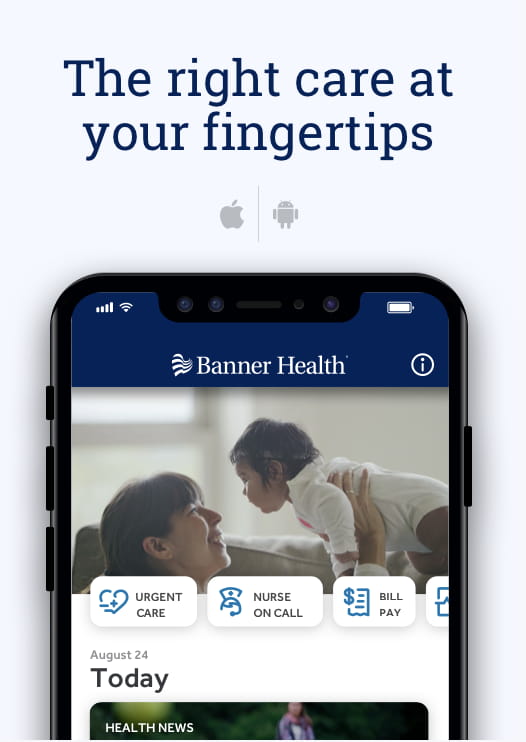When you sat down with your pregnant wife to discuss the birth plan, did it include a discussion about cesarean birth, also known as a C-section?
Today, one-third of pregnant women in the U.S. will deliver by C-section—either planned or emergency. While it has become more common, a C-section is still major abdominal surgery, which can understandably be a little scary for couples.
“Becoming a new parent and having surgery at the same time can be daunting for mom, but dad can be pretty anxious about the process too,” said Karleen Lee, an RN supervisor at the Women and Infants Services Community Health Programs at Banner Health. “While dads won’t play a major role in the surgery itself, they can play a major role before, during and after a C-section to help mom and baby.”
Whether a planned or unexpected C-section, Karleen Lee shared tips for dads and partners on what to expect, as well as, tips for helping mom and baby.
Before Childbirth
Be Prepared
Attend a childbirth class together and beef up your knowledge on childbirth and C-sections with books and other resources. Discuss any additional questions and concerns with the obstetrician.
Take a Tour
“Sometimes it’s the unexpected that makes new parents nervous,” Lee said. “To remove some of the mystery of a C-section and even vaginal birth, most hospitals offer tours, whether in-person or virtually, of the labor and delivery wing. Typically, you’ll get to see what the delivery and recovery rooms look like and the operating room where C-sections take place."
During a Cesarean
Provide Comfort and Praise
Don’t be afraid to hold her hand, give her reassurance and help her understand what is happening. And, don’t forget to remind her how amazing she is.
Stay Seated
Are you feeling faint? When you’re allowed in for the C-section, you’ll be given a seat right near your wife’s head. Although you won’t be able to see much because a sterile drape is placed between your partner’s head and the rest of her body, the whole experience may make your head spin.
“While rare, some dads still may get a little queasy—even when they can’t see what’s happening,” Lee said. “Remember to not jump up out of your seat too quickly and let the anesthesiologist or surgery team know if you are feeling a little faint. They have ways of helping dads, whether through conversation as a distraction or with an ammonia inhalant or smelling salts to prevent fainting.”
Snuggle Time
Your wife’s hands and arms may be occupied during the procedure, so be ready to be the first to snuggle your little one. Take the baby over to your wife as soon as possible to let her meet the baby. She’ll want to stare at your new creation as much as you and have skin-to-skin contact, which is so important for baby and mom.
Post-Op Care for Mom and Baby
“A C-section is major surgery, and your wife will need some extra TLC after,” Lee said. “It can take six to eight weeks for some women to recover, so make sure you or someone can be there to lend an extra hand or two.”
Here are some things you can do to help your partner at home:
- If you qualify, take paternity leave or some time off to be there for your partner and baby, especially those first few weeks after the baby is born.
- Help your wife get in and out of bed.
- Hand off the baby to your wife for feedings and snuggles to minimize any heavy lifting on her part.
- Feed the baby with expressed breast milk or formula and have your own skin-on-skin time with them.
- Try and let her sleep and rest when baby is content.
- Take on grocery shopping, cooking and house cleaning, if this isn’t already coordinated with friends and family.
- Don’t let her overdo it especially if she is very independent. Remind her, she may be a “Super Woman” but she did have major surgery and needs time for her scars and body to heal.
- Enjoy this time together. “This is precious time for your family to bond and cocoon together,” Lee said. “Especially during times like the pandemic, we’re seeing more and more how wonderful couples are doing despite not having families there physically to help. New parents are being able to take this time as their family unit to bond.”
While childbirth might not always go as planned, you can be an important support system throughout the process.
Are you expecting a baby soon or just home from the hospital? From picking the right pediatrician to safe sleep practices for baby, check out more parenting tips at bannerhealth.com.


